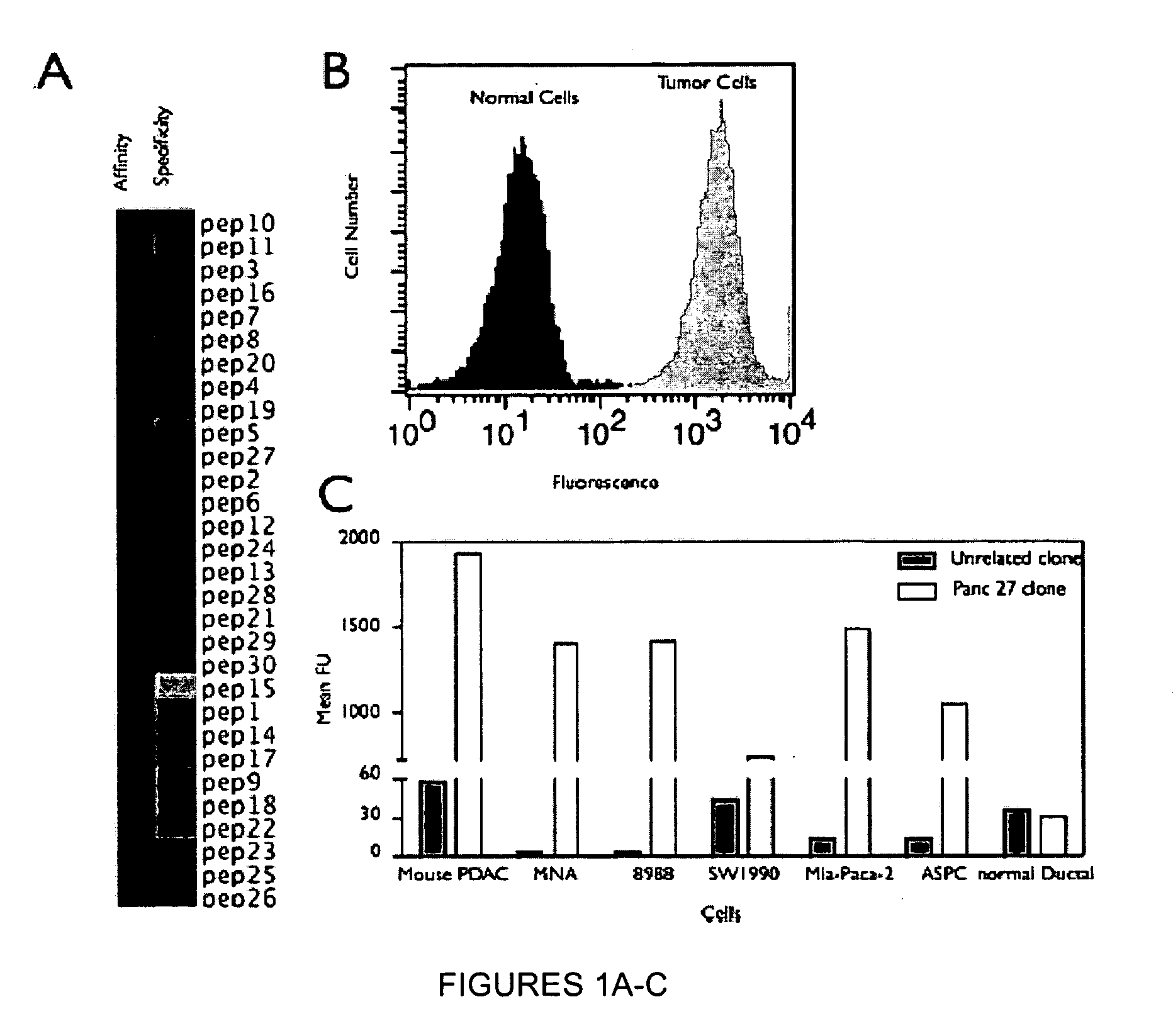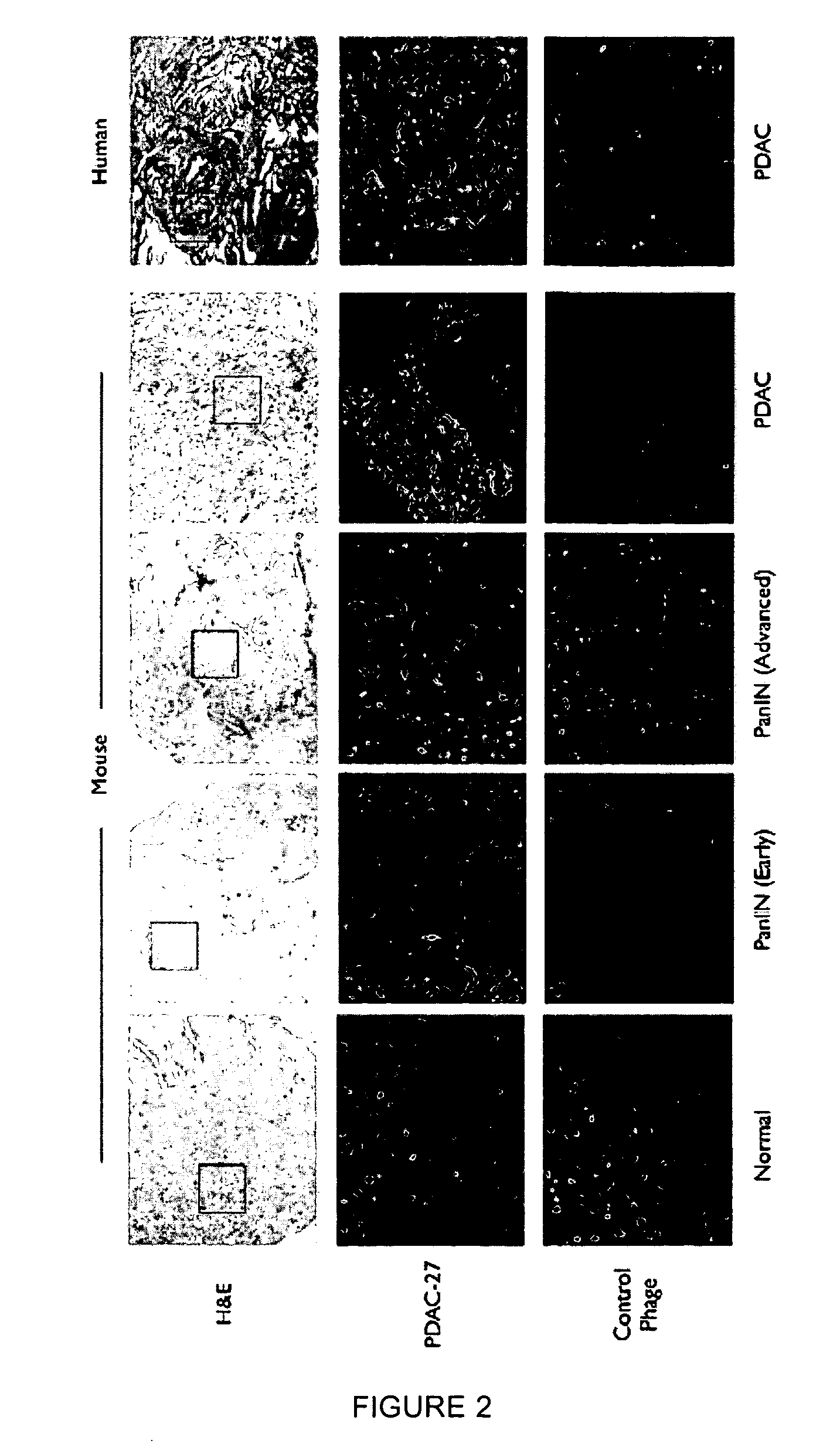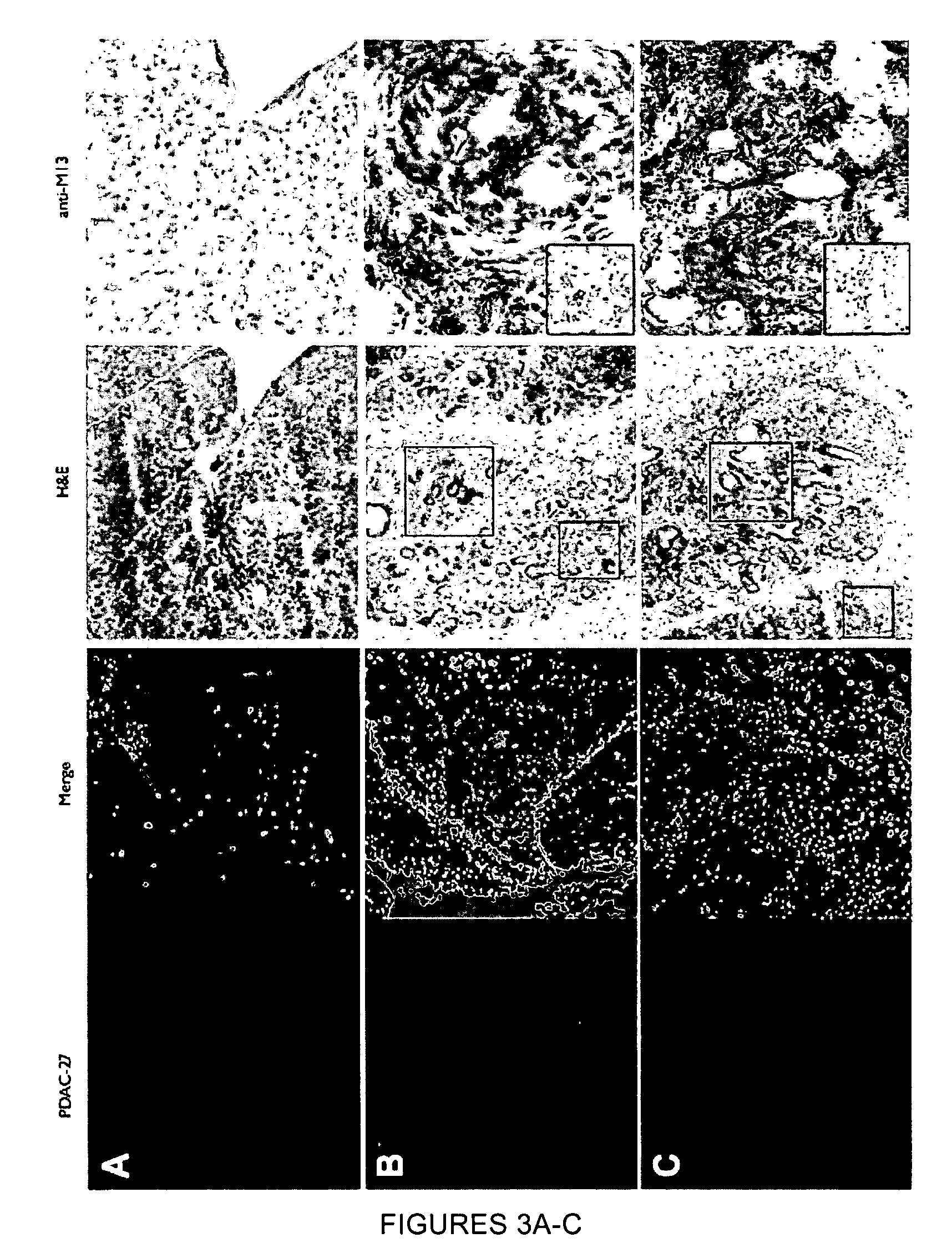Plectin-1 targeted agents for detection and treatment of pancreatic ductal adenocarcinoma
a technology of pancreatic ductal adenocarcinoma and targeted agents, which is applied in the direction of instruments, peptide/protein ingredients, drug compositions, etc., can solve the problem that cross-sectional abdominal imaging has proven to be unreliable in detecting early-stage pdac in high-risk patients
- Summary
- Abstract
- Description
- Claims
- Application Information
AI Technical Summary
Benefits of technology
Problems solved by technology
Method used
Image
Examples
examples
[0238]The following examples serve to illustrate certain embodiments and aspects of the present invention and are not to be construed as liming the scope thereof.
[0239]In the experimental disclosures which follow, the following abbreviations apply: N (normal); M (molar); mM (millimolar); μM (micromolar); mol (moles); mmol (millimoles); μmol (micromoles); nmol (nanomoles); pmol (picomoles); g (grams); mg (milligrams); pg (micrograms); ng (nanograms); pg (picograms); L and 1 (liters); ml (milliliters); μl (microliters); cm (centimeters); mm (millimeters); μm (micrometers); nm (nanometers); U (units); min (minute); s and sec (second); k (kilometer); deg (degree); ° C. (degrees Centigrade / Celsius), colony-forming units (cfu), plaque forming units (PFU), optical density (OD; o.d.), internal diameter (i.d.), and polymerase chain reaction (PCR).
example i
[0240]This example describes exemplary materials and methods for assays used during the development of the present inventions.
Cell Culture
[0241]Primary mouse pancreatic ductal cells from wildtype mice were isolated and cultivated using published methods (Schreiber, et al., (2004) Gastroenterology 127:250-260). Early passage PDAC cell lines were isolated from tumors arising in Pdx1-Cre LSL-KrasG12D p53L / L mice (designated Kras / p53L / L) (Bardeesy, et al. (2006) Proc. Natl. Acad. Sci. U.S.A. 103:5947-5952). For the phage display experiments, PDAC cells were first grown in the primary duct cell media (F12 medium supplemented with 5 mg / mL D-glucose (Sigma), 0.1 mg / mL soybean trypsin inhibitor type I (Sigma), 5 mL / L insulin-transferrin-selenium (ITS+; BD Biosciences, Palo Alto, Calif.), 25 μg / mL bovine pituitary extract (BD Biosciences), 20 ng / mL epidermal growth factor (BD Biosciences), 5 nmol / L 3,3′,5-triiodo-L-thyronine (Sigma), 1 μmmol / L dexamethasone (Sigma), 100 ng / mL cholera toxin (...
example ii
In vitro Selection and Validation of PDAC-specific Peptides
[0261]A genetically engineered mouse model of PDAC that recapitulates many of the histopathological, genomic and molecular features of the human disease was used (Carrière et al., Proc Natl Acad Sci USA. 104(11):4437-42 (2007); and Bardeesy et al. Proc Natl Acad Sci USA 103:5947-5952 (2006)). The Kras / p53 L / L model (Bardeesy et al., Proc Natl Acad Sci USA 103:5947-5952 (2006)) and wildtype controls served as a source of well-defined early passage PDAC cell lines and normal pancreatic ductal cells, respectively, for use in phage display selection and subtraction procedures to identify a pool of phage peptides specific for PDAC cells. Subsequent to selection procedures, the inventors isolated thirty individual phage plaques and performed an ELISA to identify the most selective phage for PDAC cells. The results of two experiments performed in triplicate are presented in the heat map shown in FIG. 1A and in the bar graph shown i...
PUM
| Property | Measurement | Unit |
|---|---|---|
| pH | aaaaa | aaaaa |
| pH | aaaaa | aaaaa |
| pH | aaaaa | aaaaa |
Abstract
Description
Claims
Application Information
 Login to View More
Login to View More - R&D
- Intellectual Property
- Life Sciences
- Materials
- Tech Scout
- Unparalleled Data Quality
- Higher Quality Content
- 60% Fewer Hallucinations
Browse by: Latest US Patents, China's latest patents, Technical Efficacy Thesaurus, Application Domain, Technology Topic, Popular Technical Reports.
© 2025 PatSnap. All rights reserved.Legal|Privacy policy|Modern Slavery Act Transparency Statement|Sitemap|About US| Contact US: help@patsnap.com



